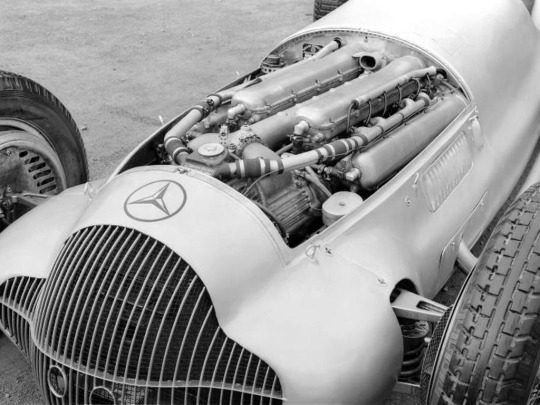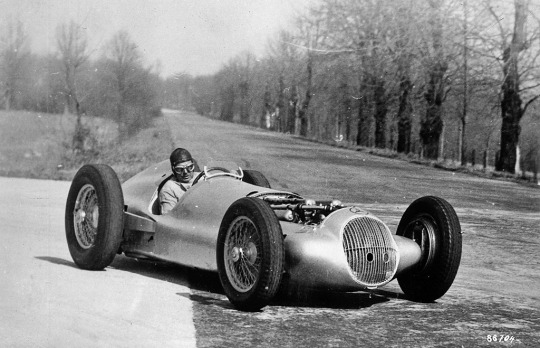#automobile lubricating oil
Explore tagged Tumblr posts
Note

NO! are you trying to reinvent the kotlc food wars in the year of our lord and savior sophie elizabeth foster 2023. wait hang on what does elizabeth mean. okay there's a few different iterations as always with translation, but its got to do with god and oaths. fascinating. please don't drink motor oil, just eat peanut butter if you want the flavor
#quil's queries#dizzeners#need to live up to my dream self and magically appear to revoke your right to motor oil#what are you an automobile?#your engine does not need lubrication#trust me I know about doctors
8 notes
·
View notes
Text
Understanding How Fluids Impact Automotive Performance
1 note
·
View note
Video
1951 BP Energol ad by totallymystified
#BP#British petroleum#petrol#gas#gasoline#Energol#oil#lubricant#leaf#autumn#fall#1951#1950s#fifties#car#automobile#motor#motoring#retro#vintage#nostalgia#ad#advert#advertising#advertisement#flickr
0 notes
Text
German mirror- Lubricant oil manufacturers
German Mirror specializes in high-quality lubricant oil manufacturers . Whether you're searching for automobile lubricants near me or looking for reliable lubricant oil manufacturers, German Mirror offers top-notch products to meet your needs. Our advanced formulations ensure superior performance and protection for your vehicles and machinery. Trust German Mirror for premium lubricant solutions that keep your engines running smoothly and efficiently.
0 notes
Text
How Often Should I change my Car Engine Oil

Regular oil changes are crucial for maintaining your car's engine health. But how often should you do it?
For most cars, aim for an oil change every 5,000 to 7,500 miles with conventional oil, or every 7,500 to 10,000 miles with synthetic oil. Check your owner's manual for specifics.
Factors like driving conditions and habits can influence this schedule. If you frequently drive in tough conditions, you may need more frequent changes.
Why bother? Fresh oil lubricates your engine, improves fuel efficiency, and prevents costly damage. Don't forget to replace the oil filter, too!
Questions? Consult a mechanic or visit our website for more tips on car maintenance.
0 notes
Text
ROFEIBI's Precision Elixir: Elevating Racing Performance with Trackside Harmony in Every Drop of Engine Oil
In the high-octane world of motorsports, where split-second decisions and precision engineering can be the difference between victory and defeat, every component of a racing car plays a crucial role. Among these, the engine oil stands out as the unsung hero, silently ensuring optimal performance and longevity. In this blog, we delve into the world of racing car engine oil and shine a spotlight on ROFEIBI's exceptional product – a lubricant that epitomizes precision in every drop.

The Need for Specialized Racing Car Engine Oil
Racing cars are a breed apart, pushing the boundaries of speed, power, and endurance. The engines of these high-performance vehicles operate under extreme conditions, subject to intense heat, rapid acceleration, and sharp turns. As a result, they demand a specialized lubricant that can withstand the punishing environment and provide superior protection to the engine components.
ROFEIBI's Racing Car Engine Oil: The Pinnacle of Precision
ROFEIBI, a name synonymous with quality and performance, has engineered a racing car engine oil that goes beyond conventional lubricants. Tailored for the demands of motorsports, ROFEIBI's product is a testament to precision engineering and meticulous formulation.
1. High-Performance Additives
ROFEIBI's racing car engine oil is fortified with a proprietary blend of high-performance additives. These additives work synergistically to enhance the oil's thermal stability, preventing breakdown under extreme temperatures. The result is an oil that maintains its viscosity, ensuring optimal lubrication even in the most demanding racing conditions.
2. Friction-Reducing Technology
Reduced friction is a key factor in boosting engine performance and longevity. ROFEIBI's racing car engine oil incorporates advanced friction-reducing technology that minimizes wear and tear on critical engine components. This not only improves horsepower but also extends the life of the engine, a crucial factor in the competitive world of racing.
Also Read : https://rofeibi.com/blog/why-low-velocity-equals-low-quality-in-car-racing-engine-oil/
3. Exceptional Shear Stability
The forces exerted on engine oil in a racing car are intense and can lead to shear thinning, compromising the oil's protective capabilities. ROFEIBI's formulation addresses this challenge with exceptional shear stability, ensuring that the oil maintains its integrity even under the most punishing conditions. This translates to consistent performance and reliable protection for the engine.
4. Optimized Viscosity
Racing car engines operate in a narrow temperature range, and maintaining the right viscosity is critical for proper lubrication. ROFEIBI's racing car engine oil is meticulously formulated to deliver optimized viscosity, striking the perfect balance between low-temperature flow and high-temperature stability. This ensures reliable lubrication across a wide range of racing scenarios.
5. Corrosion Resistance
Racing cars are often exposed to harsh environmental elements, including moisture and contaminants. ROFEIBI's racing car engine oil contains corrosion inhibitors that form a protective barrier, shielding engine components from the corrosive effects of moisture and other external factors. This not only enhances performance but also contributes to the longevity of the engine.
Why Choose ROFEIBI?
ROFEIBI's commitment to excellence extends beyond the performance of its racing car engine oil. The brand's dedication to quality and innovation is reflected in every aspect of its product, making it the preferred choice for discerning racing teams and enthusiasts.
Extensive Testing: Before reaching the market, ROFEIBI's racing car engine oil undergoes rigorous testing under simulated racing conditions. This ensures that the product meets the highest standards of performance, reliability, and durability. By subjecting the oil to extreme scenarios, ROFEIBI guarantees that it will deliver when it matters most – on the track.
Endorsements from Racing Professionals: The trust of racing professionals is a testament to ROFEIBI's racing car engine oil's effectiveness. Renowned drivers and racing teams rely on ROFEIBI to deliver the performance required at the highest levels of motorsports. The product's track record of success speaks volumes about its capability to handle the demanding nature of competitive racing.
Environmental Responsibility: ROFEIBI is committed to sustainability and environmental responsibility. The racing car engine oil is formulated with eco-friendly practices in mind, ensuring that performance excellence does not come at the cost of the environment. This commitment aligns with the growing awareness and importance of sustainability in the automotive industry.
Conclusion
In the world of racing, where precision and performance are paramount, ROFEIBI's racing car engine oil stands out as a beacon of excellence. With its advanced formulation, high-performance additives, and a track record of success, ROFEIBI has become the go-to choice for racing professionals and enthusiasts alike. When it comes to ensuring the optimal performance and longevity of a racing car engine, ROFEIBI's racing car engine oil is the epitome of precision in every drop. Choose ROFEIBI and experience trackside harmony like never before.
#racing car oil manufacturer#automotive oils and lubricant#best lubricant oil for racing car#racing car engine lubricants#automotive lubricants manufacturer#racing car engine oil manufacturer#racing car engine oil supplier#best gear oil for racing car#automobile racing car oil manufacturer#Automotive Lubricant Solution#high performance racing car engine oil#high performance racing car engine oil manufacturer#high performance racing car engine oil supplier#high performance racing car engine oil dealer
0 notes
Video
youtube
बिना मैन्युफैक्चरिंग automobile lubricant oil बिज़नेस से जबर्दस्त कमाई! ...
#youtube#बिना मैन्युफैक्चरिंग automobile lubricant oil बिज़नेस से जबर्दस्त कमाई! ... https://youtu.be/yp4UG7UTaV4?si=KE1ivQexrtHOHMkv via @YouTube
0 notes
Text

Get The Distributorship of Automobile and Transportation Distributors.
Explore lucrative opportunities in automobile and transportation distribution. Partner with us for profitable distributorship in this thriving industry today!
Visit:- Automobile and Transportation Distributors
#Automobile and Transportation Distributors#Automobile and Transportation distributorship#automobile parts distributorship#Helmets supplier#Tubes distributors#oil & lubricants distributorship#auto accessories wholesalers#car accessories distributors#Brakes manufacturers#Car parts wholesalers#Car parts manufacturers#Tyres distributorship
0 notes
Text
What Are The Types Of Lubricants Used In Automobiles?

If you are someone new to the automotive industry, you probably might be thinking this at any point in time, what are lubricants and what are the types of lubricants used in automobiles? There are several types of lubricants used in automobiles, each designed for specific applications. Read the blog to each type with its functions.
#types of lubricant used in automobile#car lubricants#automobile lubricants#types of car lubricants#automotive oils and lubricants
0 notes
Text
#coolant#lubricant#oil#engine#brakefluid#motor#automotive#motoroil#lubricantes#vehicle#antifreeze#fuelinjection#car#engineoil#lubrication#bike#automobile#olimobil
1 note
·
View note
Text

2 notes
·
View notes
Text
Engine Oil Manufacturer In India
Auto pickup petro chem Pvt. Ltd. is one of the fastest growing leading manufacturer of Engine Oils and Greases. Although this brand was into operations since 2006 under the group company Sri Niwas Lubricants. In 2020 in order to provide the premium quality a separate company Auto Pickup Petro chem Pvt. Ltd. was set up.
1 note
·
View note
Text



1938 Mercedes-Benz W154
In September 1936, the AIACR (Association Internationale des Automobile Clubs Reconnus), the governing body of motor racing, set the new Grand Prix regulations effective from 1938. Key stipulations included a maximum engine displacement of three liters for supercharged engines and 4.5 liters for naturally aspirated engines, with a minimum car weight ranging from 400 to 850 kilograms, depending on engine size.
By the end of the 1937 season, Mercedes-Benz engineers were already hard at work developing the new W154, exploring various ideas, including a naturally aspirated engine with a W24 configuration, a rear-mounted engine, direct fuel injection, and fully streamlined bodies. Ultimately, due to heat management considerations, they opted for an in-house developed 60-degree V12 engine designed by Albert Heess. This engine mirrored the displacement characteristics of the 1924 supercharged two-liter M 2 L 8 engine, with each of its 12 cylinders displacing 250 cc. Using glycol as a coolant allowed temperatures to reach up to 125°C. The engine featured four overhead camshafts operating 48 valves via forked rocker arms, with three cylinders combined under welded coolant jackets, and non-removable heads. It had a high-capacity lubrication system, circulating 100 liters of oil per minute, and initially utilized two single-stage superchargers, later replaced by a more efficient two-stage supercharger in 1939.
The first prototype engine ran on the test bench in January 1938, and by February 7, it had achieved a nearly trouble-free test run, producing 427 hp (314 kW) at 8,000 rpm. During the first half of the season, drivers such as Caracciola, Lang, von Brauchitsch, and Seaman had access to 430 hp (316 kW), which later increased to over 468 hp (344 kW). At the Reims circuit, Hermann Lang's W154 was equipped with the most powerful version, delivering 474 hp (349 kW) and reaching 283 km/h (176 mph) on the straights. Notably, the W154 was the first Mercedes-Benz racing car to feature a five-speed gearbox.
Max Wagner, tasked with designing the suspension, had an easier job than his counterparts working on the engine. He retained much of the advanced chassis architecture from the previous year's W125 but enhanced the torsional rigidity of the frame by 30 percent. The V12 engine was mounted low and at an angle, with the carburetor air intakes extending through the expanded radiator grille.
The driver sat to the right of the propeller shaft, and the W154's sleek body sat close to the ground, lower than the tops of its tires. This design gave the car a dynamic appearance and a low center of gravity. Both Manfred von Brauchitsch and Richard Seaman, whose technical insights were highly valued by Chief Engineer Rudolf Uhlenhaut, praised the car's excellent handling.
The W154 became the most successful Silver Arrow of its era. Rudolf Caracciola secured the 1938 European Championship title (as the World Championship did not yet exist), and the W154 won three of the four Grand Prix races that counted towards the championship.
To ensure proper weight distribution, a saddle tank was installed above the driver's legs. In 1939, the addition of a two-stage supercharger boosted the V12 engine, now named the M163, to 483 hp (355 kW) at 7,800 rpm. Despite the AIACR's efforts to curb the speed of Grand Prix cars, the new three-liter formula cars matched the lap times of the 1937 750-kg formula cars, demonstrating that their attempt was largely unsuccessful. Over the winter of 1938-39, the W154 saw several refinements, including a higher cowl line around the cockpit for improved driver safety and a small, streamlined instrument panel mounted to the saddle tank. As per Uhlenhaut’s philosophy, only essential information was displayed, centered around a large tachometer flanked by water and oil temperature gauges, ensuring the driver wasn't overwhelmed by unnecessary data.
97 notes
·
View notes
Text

1929 Duesenberg Model J Convertible Victoria Coachwork by Rollston
Duesenberg Model J and Model SJ
Fred Duesenberg was a master of creating engines and was a creative designer. He had a talent for conceiving new ideas and ways of doing things. The engines he constructed were beautiful, mechanically sound, and advanced. E.L. Cord gave him one task: 'Create the best car in the world.' This was a very tall order and came at a very difficult time in history. The onset of the Great Depression and the Stock Market crash was just around the corner. Competition in the luxury car segment was fierce and involved all facets of the automobile. The cylinder wars that began in the 1920s and continued into the 1930s had marque's trying to outdo each other on the bases of its engine output, the number of cylinders, and the speed of their ultra-luxury automobiles. Styling continued to be very important and often outsourced to the greatest designers and coachbuilders of the time. Maruqee's such as Cadillac, Packard, Rolls-Royce, Hispano-Suiza, Isotta Fraschini, Bugatti, and others were all trying to out-do each other and continue in business during this difficult point in history.
The Duesenberg Model J was first unveiled to the public at the New York Car Show on December 1st of 1928. Only the chassis and engine were shown and it still impressed enough to make front-page news. The wheelbase was 142-inches making it nearly 12 feet. The chassis had a six cross-members made it very sturdy and able to accommodate the heaviest of bodies. The engine had dual overhead camshafts and eight-cylinders with four valves per cylinder. It displaced 420 cubic-inches and produced an impressive 265 horsepower in un-supercharged form. The engine had been designed by Fred Duesenberg and constructed by the Lycoming Company, which had been recently acquired by E.L. Cord. There was a brilliant lubrication system which automatically lubricated various mechanical components after sixty to eighty miles. Two lights mounted on the dashboard indicated when the lubrication process was transpiring. After 750 miles, lights mounted on the dashboard would light-up indicating the oil required changing. After 1500 miles, the lights would illuminate indicating the battery should be inspected. The top speed was 119 mph and 94 mph in second gear. With the use of a supercharger, the top speed increased even further, to nearly 140 mph. Zero-to-sixty took around eight seconds with 100 mph being achieved in seventeen seconds.
2 notes
·
View notes
Text
A theory
People would be more enthusiastic about electric cars if they were more stupid technology.
And what I mean by this is: The approach to electric cars comes from a more Tech Futurist, Brave New World, "The tech singularity will evolve humanity!" mentality, not designed for the homesteading truck driver.
That's not going to attract Farmer Ned who needs a cheap, reliable way to bring lots of heavy, rambunctious loads from A to B and survive like a Toyota Hilux. That's not going to attract the 16-19 year old boys that want to have a sweet ride with a lot of power to show off their youth and potential and power on the road and ability to drive. That's not going to attract the diesel loving woman that likes the power and efficiency of the engine.
If you want to attract people to electric cars and get people more enthusiastic about them, you need to make the cars dumber. You need to make it so you can TOTALLY OWN the cars and not need a million software updates. You need to make it so some fellow named Bob can institute a clever repair of the mechanical parts with clever use of welding and a few ordered parts.
The mentality that people shouldn't be able to OWN their own vehicles as property has to die, if you want people to drive electric cars. The end user needs to be able to just get in, turn the key and drive with as few digital computer bits as an I.C.E. from the 1967.
But that's not the direction Brave New Worlders want people to go. They aren't trying to sell a car, they're trying to shoehorn people down a path they may not necessarily want to go. Where the software makers dictate and gatekeep on if your car runs or not, it can be shut off externally via a signal, or the data accessed without your awareness or permission.
The first people to be able to make Absolutely Dumb electric cars that just run with the torque and energy efficiency of a standard EV but have all the personal privacy and private ownership of a classic automobile, will make a mint.
Electric vehicles do not need a lot of potentially carcinogenic lubricants and oils in the engine because magnetic fields and electricity do most of the driving for them. They don't need expensive chemical fuels, even if electricity expenses may grow as more people use them. They don't need expensive catalytic converters with rare metals, because they don't produce noxious fumes out the exhaust pipe. They can be stripped down powerhouses.
You just need batteries or capacitors big enough to store the charge that'd give you as much work as a tank of gasoline or diesel. And that's it. Outside that, it's all brake pads and non-ICE engine stuff. Maybe some electronics for luxury.
Design an electric car for the stiff who has to buy a cheap A-to-B vehicle and doesn't NEED stuff like self-warming seats, that's just a powerful body so they can pick up and move shit and not spend a fortune repairing and replacing things, or maintenance and repair is so easy that the mechanics can get in, switch out parts, get out, and get people on their way. ICE engines are very complex and complicated, electric motors are nowhere near as complicated or should be that expensive.
But the Brave New World people don't WANT this sort of availability, they want it too expensive for the poor layman to afford, because they don't like the idea people can just get up and move thousands of pounds of vehicle and belongings so easily.
2 notes
·
View notes





